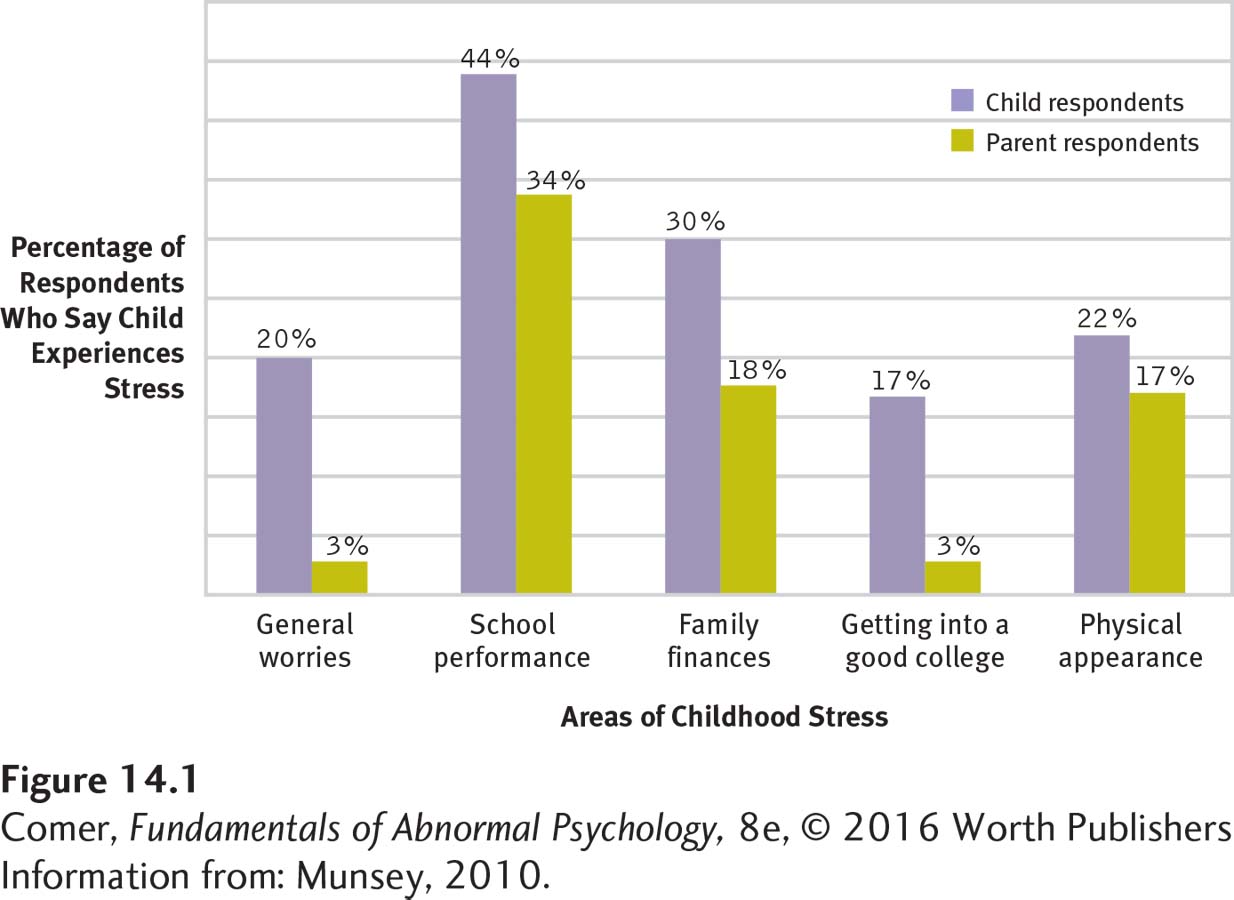14.1 Childhood and Adolescence
People often think of childhood as a carefree and happy time—yet it can also be frightening and upsetting (see Figure 14.1). In fact, children of all cultures typically have at least some emotional and behavioral problems as they encounter new people and situations. Surveys reveal that worry is a common experience: close to half of all children in the United States have multiple fears, particularly concerning school, health, and personal safety (Jovanovic et al., 2014; Szabo & Lovibond, 2004). Bed-wetting, nightmares, temper tantrums, and restlessness are other problems that many children contend with. Adolescence can also be a difficult period. Physical and sexual changes, social and academic pressures, school violence, personal doubts, and temptations cause many teenagers to feel nervous, confused, and depressed.

Figure 14.1: figure 14.1 Are parents aware of their children’s stress? Not always, according to a large survey of parents and their children ages 8 to 17. For example, although 44 percent of the child respondents report that they worry about school, only 34 percent of the parent respondents believe that their children are worried about school. (Information from: Munsey, 2010.)
All people who are bullied are upset by it, but some seem to be more traumatized than others. Why might this be so?
A particular concern among children and adolescents is that of being bullied (see InfoCentral on page 466). Surveys throughout the world have revealed repeatedly that bullying ranks as a major problem in the minds of most young respondents, often a bigger problem than racism and peer pressure to try sex or alcohol (Hong et al., 2015; Isolan et al., 2013; Smith, 2011, 2010). More generally, over 25 percent of students report being bullied frequently, and more than 70 percent report having been bullied at least once. Typically, kids who have been bullied react with feelings of humiliation, anxiety, or dislike for school. Just as troubling, the technological advances of today’s world have broadened the ways in which children and adolescents can be bullied, and cyberbullying—bullying and humiliating by e-mail, text messages, and Facebook—is now on the rise (Sampasa-Kanyinga et al., 2014).
Page 465
Surveys suggest that as many as 9 of 10 gay, lesbian, transgender, or bisexual middle and high school students are physically and/or verbally harassed each year (McKinley, 2010). The harassment ranges from taunts to beatings.
Beyond these common concerns and psychological difficulties, at least one-fifth of all children and adolescents in North America also experience a diagnosable psychological disorder (NIMH, 2015; Winter & Bienvenu, 2011). Boys with disorders outnumber girls, even though most of the adult psychological disorders are more common among women.
Some disorders displayed by children—childhood anxiety disorders, childhood depression, and disruptive disorders—have adult counterparts, although they are also distinct in certain ways. Other childhood disorders—elimination disorders, for example—usually disappear or radically change form by adulthood. There are also disorders that begin at birth or in childhood and persist in stable forms into adult life. These include autism spectrum disorder and intellectual disability (previously called mental retardation), the former marked by a lack of responsiveness to the environment, the latter by an extensive disturbance in intellect.
